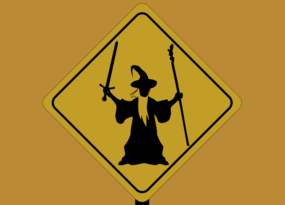What Does CTR Mean in SEO?
How to
In digital marketing, it’s vital to track goals that matter the most for business. CTR is a go-to metric for any type of digital specialist: PPC, email and content marketer, social media marketer, and, of course, SEO specialist. In this blog post, we’ll focus on the latter one, and you’ll learn what organic CTR is, how to measure and improve it. Let’s start from the very beginning and get acquainted with the very entity of CTR.
Feel like bogging down in a billow of SEO topics? Sign up to receive our weekly newsletter with nonperishable cases and nifty how-to's. Sign Up
What is CTR in SEO
Organic CTR or click-through rate is a ratio specifying how often people click on your website after they see it in search results.
CTR usually represents the number of clicks divided by the number of times your website has been shown (this very moment is called an ‘impression’). For example, if your impression has gained 10 clicks for a keyword ‘pink swimming suit’ that 100 people search for every month, the total CTR is 10%.
[1 organic clicks / organic impressions]
Your organic CTR depends mainly on how you rank in the SERPs. A high CTR means that people find your content relevant, which causes them to click. By taking on board this metric, a website owner gets an opportunity to analyze what pages work well and define the ones that should be improved.
A good CTR score for SEO
A good CTR rank averages for a score above 3%. Such a number implies that three out of 100 people who stumbled upon your site clicked on it.
So, how do you keep up with that? Here are some insights you may want to know and try to implement in your SEO strategies to improve your website's CTR ranking:
- On average, moving up one spot in search results can increase your website's CTR by 2.8%, so you need to put some effort into ranking higher in Google.
- Positive titles can improve your CTR. Including a positive sentiment in your titles can improve the CTR by approximately 4%.
- Title tags between 40 and 60 characters have the highest CTR scores. The pages containing a title tag of such length have a higher CTR than those outside that range.
- It doesn't matter if your titles do or don't contain a question — they both would have similar CTRs.
- The #1 organic result is 10x more likely to get a click compared to one in the #10 spot, so you'd want to live up to the highest positions.
- The organic CTR for positions 8-10 is practically the same. Therefore, moving up a few spots at the bottom of the first page may not bring much more organic traffic.
- However, the CTR depends on the position you’re moving from and to. For instance, going up from position #3 to #2 will give your page a significant CTR boost. Moving from #10 to #9, though, won't make a huge difference.
- Longer keywords tend to have a higher CTR. Adding keywords that are 10-15 words long can get you 1.76x more clicks than single-word ones.
- URLs containing terms similar to a keyword have a 45% higher CTR compared to URLs that don’t contain a keyword at all.
How to calculate your website's organic CTR with Netpeak Spider
Let’s recap four main entities that take part in organic CTR calculation: keywords you rank for, clicks, impressions, position.
To extract this data:
- Go to Google Search Console and download it into a CSV file. Note that you can only download up to 1000 keywords.
- Next, open the file and delete all branded keywords – they will distort the whole picture since they are biased.
- Group keywords by rank.
- Add up all the clicks for each position, and divide by its total number of impressions.
Google Analytics is yet another tool to see how CTR correlates with an average position. To do so:
- In the left menu, find an ‘Acquisition’ tab and click on it. Then go to the ‘Search Console’ → ‘Queries.’

- Having done it, you’ll find yourself on the statistics page, which displays all data, including CTR, average position, the number of clicks, and many other things that are compiled in one place.

Read more → CTR manipulation SEO
A pro tip:
You see that In GSC you’re confined to a limited range of activities: export 1000 queries at a time and analyze main indicators either by URL or by search queries.
It’s hardly a viable approach if you have a bigger website on stake. In Netpeak Spider, you can set up access to your GSC account and export absolutely all queries URL ranks for, and metrics into a single table. This is where an elbow room for true analysis appears. Follow a user guide to know how to tune the process: 'Google Analytics and Search Console integration.’

Export of search queries from Google Search Console and Yandex.Metrica is a Pro feature of Netpeak Spider. To have access to this and other Pro features such as white label reports, integration with Google Drive / Sheets, and multi-domain crawling, you need to subscribe to Netpeak Spider Pro plan.
Apart from that, Netpeak Spider allows you to integrate over 20 other SEO services to retrieve in-depth insights about your website. You'll be able to monitor over 400 technical, on-page, and other parameters in a convenient dashboard—all done in real time in a couple of minutes.
All you have to do to start checking your website for organic CTR is the following:
- Compile a list of URLs you need to check: you can either paste it from the clipboard or upload a separate file;
- Select the necessary parameters that impact your CTR in the right sidebar;
- For more detailed insight, feel free to integrate data from Google Analytics and GSC;
- Once you're done, click Start and wait for Netpeak Spider to crunch the numbers.
Everything you need will be placed in an interactive table where you can select and focus on a specific metric. The app also allows you to download the data for further SEO planning.
Measuring sitewide organic CTR

Netpeak Spider helps you retrieve CTR-related data from Google Search Console. To do that, connect the service to Netpeak Spider and select the necessary parameters in the right sidebar.
Measuring CTR for a specific search query
Thanks to its integration with Google services, Netpeak Spider also lets you see the CTR for a specific search query. Simply specify what exact query you're looking at and launch the crawling process by clicking Start.
Measuring CTR for a specific page
Select the pages for which you want to calculate the CTR, and Netpeak Spider will show this to you in an interactive dashboard.
Measuring CTR for a specific page and search query
You can also combine the data you want to see at once, so you can easily crawl both the score for specific pages and search queries.
Factors that impact organic CTR
Organic CTR is very contextual and can be influenced by many factors:
- SERP position. In many cases, the most decisive factor in your organic CTR is your page rank. The first three spots receive most of the clicks and have a higher CTR than pages that have a rank of #4 and below.
- Search intent. The query type may also affect the CTR. Informational queries (e.g., "how to bake a cupcake") might have a different CTR than transactional queries (e.g., "buy vanilla cupcakes online").
- SERP features. Some SERPs contain featured snippets, map packs, and other add-ons that can dramatically change the CTR of other organic results and skew the distribution of clicks for pages.
- Rich snippets. Some links in the SERP will contain extra data like ratings or site links, which can improve the CTR for those links and decrease the CTR for other results.
- Brand recognition. Established brands or websites with strong domain authority (DA) scores may naturally have a higher CTR due to recognition and trust.
- Industry or niche. Different industries have varying average CTRs.
- Mobile vs. desktop searches. The user’s device can influence the CTR score, and mobile searches can have a different CTR pattern than desktop queries.
- Title and meta description. Compelling page titles and descriptions can impact a user's decision to click on your link.
How to increase organic CTR
When it comes to improving your CTR, the driven question sounds like: ‘What may draw the attention of my target audience?’
As a matter of fact, well-thought-out SEO performance doesn’t mean improving your website conversion automatically. It’s quite important to understand what users seek to include the right keyword in the title and meta description. Titles, URLs, rich snippets – everything does its own bit into honing the relevance of your webpage.
Here is more on what can increase relevance and induce a searcher to click:
Conduct a website audit

Regular website checkups can help you evaluate your pages' CTR scores and see which factors impact this score the most. Modern tools are quite powerful and can analyze multiple parameters for as many pages as you need.
For instance, Netpeak Spider allows you to crawl multiple URLs and analyze over 50 parameters, view them via the interactive dashboard, integrate data from Google Analytics and Search Console, and complete many other SEO-related tasks.
Target featured snippets

A snippet that ranks #1 in organic search results obtains the highest overall CTR at over 40%. Featured snippets account for a 35.1% share of all clicks. Users click on featured snippets that seem informative and provide them with the required, high-quality content.
Optimize title tags

Search engines use title tags to determine the web pages relevant to keywords people enter in Google or another search engine.
The title tag is one of the most important tags for ranking well on search engines. The SEO title tag is probably why three out of four people ignore irrelevant or low-quality content.
They have the power to boost your search engine rankings if done correctly.
They tell Google and other search engines about what a page is about, what topic it covers, and how relevant it is to the searcher’s query.
If a web page does not have a title tag, it is very likely the search engine and, in this case, Google will pick something within your content and display it in the SERP.
Site visitors also use title tags when they bookmark your site.
The title of the bookmark will be taken from the title of your web page, which means you need to write an interesting one for it to be saved.
Improve meta descriptions

Crafting a compelling meta description is vital for improving CTR in SEO and engaging users. Let's see how a well-groomed description can boost the CTR of your content:
- Incorporating relevant keywords in the meta description enhances visibility and attracts more users.
- Generating a meta description that triggers action can motivate users to click.
- A well-crafted meta description offers a clear summary of the page's content.
- Crafting unique and engaging meta descriptions piques users' curiosity and increases clicks.
- Rich snippets in meta descriptions provide valuable details at a glance and encourage people to click.
- Incorporating a promise can entice users to click and engage with your on-page content.
Target rich snippets with schema markup

Rich snippets powered by schema markup are crucial for enhancing your website's ranking in search results. They provide extra information and value to users, making your listing visually appealing and more informative.
Here's how you can utilize rich snippets and schema markup to improve your CTR curve:
- Choose relevant schema types. Select schema types that align with your content — for instance, use product schema for e-commerce sites, review schema for service-based platforms, or FAQ schema for informational sites. This way, you can deliver structured data to search engines and enhance your appearance in search results.
- Use enticing elements. Incorporate rich snippet elements like star ratings, prices, review counts, or images — this will make and outstanding search result, capture users' attention, and increase the likelihood of clicks.
- Test and monitor performance. Regularly checkup and monitor the performance of rich snippets. Combine various schema markup and monitor their impact on CTR. Analyzing the data and making data-driven decisions will help optimize your rich snippets in the most efficient way.
Leveraging rich snippets and schema markup will help you enhance the visibility and appeal of your search listings, eventually drive higher CTR, and attract more quality clicks.
Optimize the page’s URL

URL optimization is a process of refining the URL structure of a website / blog page to make the it easier to access by users and search engine crawlers. It also helps improve the organic click through rate.
Here are some tips on optimizing your website's URL:
- Make sure it's 100% readable
- Use hyphens instead of underscores
- Properly structure your URL to indicate its importance correctly
- Don't use capital letters
- Make sure your homepage has only one URL
- Block poor-quality URLs with robots.txt
- Use canonical URLs
- Enable HTTPS
- Integrate dynamic content
- Redirect a preferred domain
Target long-tail keywords

Long-tail keywords enable many benefits and are the backbone of your content marketing and SEO strategies. By using them, you can increase your website’s traffic, dominate search rankings, and boost your conversions. They're easy to rank, maintain high conversion rates, and provide almost endless content ideas.
Optimize your favicon

A favicon is a small 16×16 pixel icon that plays the branding role for your site. Its main purpose is to help visitors locate your web page faster and easier when they have multiple tabs open.
Here's how you can ensure a well-optimized favicon for your website:
- Make sure it exists
- Make your favicon simple and well-recognizable to others
- Enable a GZIP compression for it
- Create a smaller version of your favicon for browsers that don't support GZIP
- Make an SVG favicon
- Make it cacheable
Improve page loading speed

Well-optimized page load speed improves the UX and makes users stay longer on your page — which, eventually, can motivate them to find out more about your product and click on the desired button to land on a specific page. This will improve your page's CTR rank and SERP stats.
Here's what you can do to improve your pages' loading speed:
- Make sure your images are optimized
- Decrease the number of HTTP requests
- Utilize browser HTTP caching
- Remove unnecessary render-blocking JavaScript
- Limit the usage of external scripts
- Limit the usage of redirects
- Minify CSS and JavaScript files
Eliminate keyword cannibalization

Keyword cannibalization practically means cannibalizing your own search results by splitting CTR, links, content, and conversions between two pages that should be one.
When you do this, you aren’t showing the depth of your knowledge to Google and aren’t improving your site's authority for that query. Instead, you’re asking Google to weigh your pages against one another and choose which ones it thinks suits the matching keywords best.
When you have multiple pages ranking for the same keyword, you force your pages to compete with each other.
Consequently, each page has a lower CTR, diminished authority, and lower conversion rates than one consolidated page would have. Avoiding this on your website will help you maintain high CTR levels. And, to make sure you're not cannibalizing keywords, you should regularly check up your website through dedicated SEO tools.
Here are some other best practices to help you out:
- Restructure your website
- Create new landing pages
- Find new keywords
- Consolidate your content
- Use 301 redirects
Check URLs for SEO parameters with Netpeak Checker
It's worth running regular website checkups to ensure your website has a high CTR rank and that your SEO strategy works as planned. Netpeak Checker would be your perfect option in this case. This powerful, handy tool offers multiple features and integrations with various SEO-related services.
Here's what else you can do thanks to Netpeak Checker:
Integration with 25 other services to analyze 450+ parameters

Netpeak Checker enables integrations with 25+ SEO services, including Moz, SimilarWeb, Ahrefs, Serpstat, Google Analytics, and more.
50+ on-page parameters

Netpeak Checker delivers research results in an interactive dashboard. Here, you can monitor redirects, titles, response time, status codes, mobile-friendliness, etc. Simply select the required parameters and click "Start."
Website traffic estimation

Netpeak Checker reflects the traffic volumes on a target page, potential link-building donors’ share ratios, and traffic by location. It also detects the prevailing types of traffic on a target page (search, organic, direct, mail, social, etc.).
Batch Core Web Vitals checkup

Retrieve data from Google PageSpeed Insights and analyze your website's page load speed, responsiveness, and visual stability.
Integration with Google Drive & Sheets

Connect your Google Drive account to Netpeak Checker and quickly export any report to Google Sheets and share it with your colleagues or partners anytime.
Wrapping Up
So to wrap this all, CTR depends on various factors:
- Your position in the SERPs.
- The temperature of competition.
- Presence of featured snippets and ads.
- Branded and unbranded searches.
- Many other reasons.
You can optimize the pages for a better CTR performance. It’s especially important when the pages receive impressions but no clicks. Think about improving title and meta description tags by implementing structured data and using the right keywords. Go for those pages that really need your watchful eye. The ones that already get win acclaim are better to leave for further analysis.



